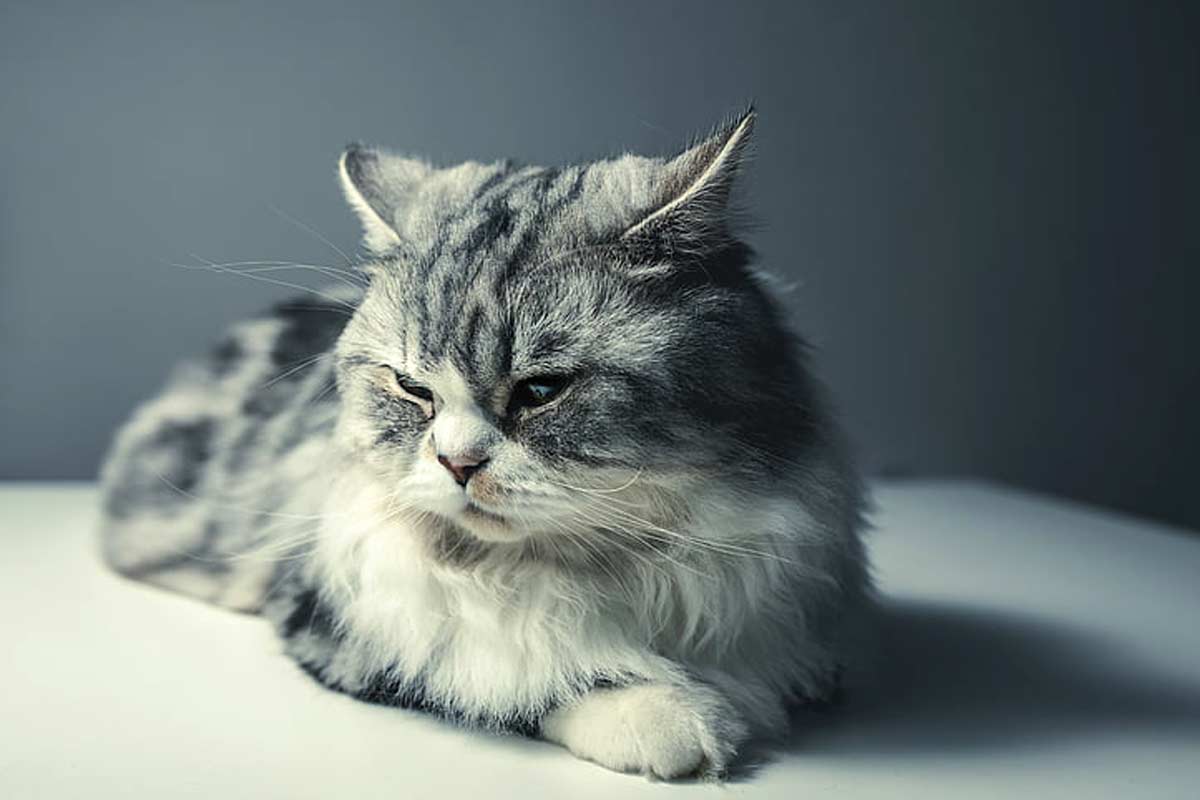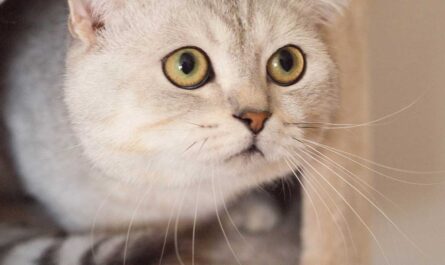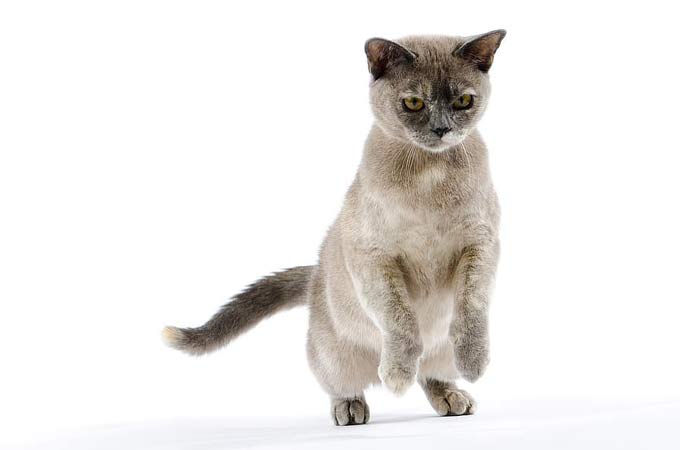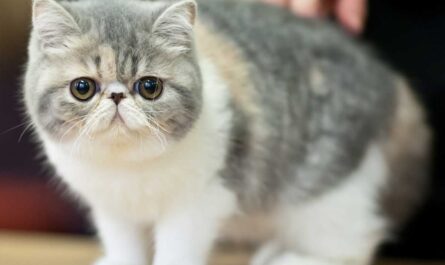How to tell if a shy cat likes you? Determining if a shy cat likes you requires keen observation and an understanding of feline behavior. Shy cats often exhibit subtle signs of affection that may differ from those of their more outgoing counterparts. One key indicator is the gradual decrease in skittish behavior around you. A shy cat that starts spending more time in your presence, even if from a distance, may be signaling a growing sense of comfort. Additionally, pay attention to their body language. A cat that likes you might display slow blinks, a sign of trust and affection in feline communication. Ear positioning is another clue; forward-facing ears suggest interest and curiosity, while slightly flattened ears could indicate fear or discomfort.
The Ballet of Understanding: A Personalized Approach to Affection
Understanding a shy cat’s unique way of expressing affection is not a formulaic equation; it’s a dynamic dance where the caregiver attunes themselves to the cat’s singular rhythm. The shy cat, like a soloist on the stage of companionship, expresses affection in a language crafted with exquisite precision.
In this ballet of understanding, the caregiver becomes a choreographer who adapts their movements to match the shy cat’s cues. Affection is not a one-size-fits-all commodity; it’s a bespoke garment tailored to the feline’s specific preferences. The gentle touch that resonates, the favored hiding spot, or the particular toy that elicits joy—these become the notes in the personalized symphony of affection.
This recognition of uniqueness is not just an acknowledgment but an active celebration. The caregiver, in their journey with a shy cat, revels in the discovery of the cat’s idiosyncrasies, preferences, and expressions of love. Each cat, with its distinctive personality, becomes a singular muse in the caregiver’s artistic portfolio—a living testament to the rich tapestry of feline individuality.
How to tell if a shy cat likes you
Gentle interactions like soft, slow petting or allowing the cat to initiate contact can build trust. Purring, while not exclusive to contentment, is often associated with positive feelings. Watch for tail movements; an upright or gently curved tail can signify happiness. Offering treats or engaging in interactive play can also foster a positive bond. It’s essential to respect the cat’s pace and provide a calm, quiet environment to encourage their socialization. Developing a relationship with a shy cat takes patience and understanding, allowing the cat to gradually open up and express their affection in their own time.
1. The Eloquent Slow Blink: A Feline Expression of Trust
In the silent lexicon of feline communication, the slow blink emerges as an eloquent sonnet—a gesture pregnant with the profound language of trust and affection. The caregiver, in this silent exchange, becomes a keen interpreter of the feline’s emotional landscape.
A slow blink, embellished with a subtle head tilt, is not a mere blink; it’s a cat’s way of extending an olive branch of trust. For a shy cat, the bestowal of this deliberate gaze is akin to unlocking a treasure trove of feline sentiment. If a shy cat graces you with this languid blink, it’s not merely an optical phenomenon; it’s a profound indicator that the feline feels a sense of comfort and safety in your presence.
In this ballet of blinks, the caregiver reciprocates with a blink of their own—a silent affirmation of the bond forged in trust. The slow blink becomes a secret handshake, an unspoken covenant that bridges the gap between human and feline, transcending the barriers of shyness.
2. Vocal Cadence: A Harmonious Symphony of Trust
The feline vocal repertoire is a symphony, each meow, chirp, or trill composing a unique note in the emotional composition of a cat’s expression. For a shy cat, vocalizations are not mere sounds; they are a lyrical declaration—a cadence that echoes the evolving narrative of trust and familiarity.
Purring, the universal anthem of contentment becomes a barometer of a shy cat’s comfort. The gentle rumble emanating from the feline signifies a serene acceptance of the caregiver’s presence. In the rhythmic resonance of purring, the shy cat communicates not just comfort but an evolving trust, a growing symphony of connection.
Chirping or trilling, akin to a melodic serenade, goes beyond the realm of mere vocalization. It becomes a joyous expression, a harmonic manifestation of happiness and friendliness. When a shy cat ventures into the realm of vocal cadence around the caregiver, it’s not a mere utterance; it’s a testament to the burgeoning trust and the feline’s willingness to engage in a harmonious dialogue.
In this melodic ballet of vocalizations, the caregiver becomes a keen listener, attuned to the subtleties of the feline’s expressive notes. Each purr, chirp, or trill becomes a verse in the evolving poem of companionship, affirming that the shy cat, through vocal cadence, is gradually revealing the layers of trust and building a harmonious connection.
3. Kneading: A Sentimental Echo of Feline Comfort
In the tender choreography of feline behavior, the act of kneading emerges as a poignant dance—a nostalgic ballet that transcends time and echoes the tender bonds of kittenhood. Known affectionately as “making biscuits,” this rhythmic gesture is not just a physical motion; it’s a heartfelt expression that speaks volumes about a cat’s emotional state.
Kneading, reminiscent of the tender moments when kittens knead their mother’s belly to stimulate milk flow, becomes a sentimental encore of comfort. When a shy cat engages in this rhythmic motion in your presence, it’s not merely a display of physicality; it’s a vulnerable revelation of relaxation and trust. The caregiver, witnessing this feline ballet, becomes a privileged audience to a performance that unravels the layers of the cat’s emotional history, expressing a profound sense of security in their current surroundings.
In the gentle rise and fall of paws, the shy cat narrates a story—a story of comfort, reassurance, and a profound connection to the caregiver. Kneading becomes a tactile language, a testament to the burgeoning trust that transforms the domestic space into a sanctuary of solace and familial warmth.
4. Gentle Headbutts: Feline Affection in a Nudge
In the subtle ballet of feline expressions, the gentle headbutt becomes a tender gesture—an eloquent nudge that transcends the limits of words. When a shy cat seeks to make contact by nudging your hand or leg with their head, it’s not a mere physical act; it’s a profound declaration of affection and a desire for connection.
The caregiver, in this intimate dance, becomes the recipient of a feline caress that goes beyond the tactile. The gentle headbutt is a whispered sonnet, a silent plea for attention and acknowledgment. For a shy cat, the act of initiating contact in this manner is a vulnerable disclosure—an invitation extended with trust and a hopeful anticipation of reciprocation.
In responding to the gentle headbutts, the caregiver becomes an active participant in the feline’s quest for connection. Each nudge is a heartbeat in the evolving rhythm of companionship, and the caregiver, with each tender response, reinforces the bridge of trust being delicately constructed. The gentle headbutt becomes a shared language, a dialect of affection that cements the burgeoning bond between the shy cat and their trusted companion.
5. Rubbing: A Feline Overture of Ownership and Fondness
When a shy cat rubs against your legs or the furniture in your vicinity, they are not merely engaging in a physical act; they are orchestrating a silent symphony of claiming and affection. In this tactile ballet, the shy cat uses the language of rubbing to mark you with their scent, a personalized declaration that you are now an integral part of their feline realm.
The caregiver, as the object of these feline anointments, becomes a cherished territory—an entity marked with the unique signature of the cat’s scent. When a shy cat chooses to rub against you, it’s a tangible proclamation of trust and liking. The furniture, too, becomes an unwitting canvas upon which the feline artist paints their olfactory masterpiece, weaving a tapestry that blurs the boundaries between their space and yours.
In this feline overture of rubbing, the caregiver becomes a willing participant in the ongoing narrative of mutual fondness. Each rub is not just a physical touch; it’s a gesture of inclusion, a tactile dialogue that communicates the feline’s desire to intertwine their scent with yours. The caregiver, in acknowledging and reciprocating these feline overtures, becomes a part of the olfactory duet—a shared language that transcends the confines of words and deepens the connection between the shy cat and their chosen companion.
6. Tail Language: The Silent Emissary of Feline Sentiments
In the silent diplomacy of feline communication, the tail emerges as an eloquent emissary—a dynamic flag that communicates the feline’s emotional state with unwavering clarity. For a shy cat, the position and movement of the tail become a balletic language, conveying sentiments that surpass the limits of verbal expression.
A held-high tail with a slight curve at the tip is not just a physical stance; it’s a proud standard that signifies confidence and friendliness. In this regal posture, the shy cat communicates a sense of ease and trust in the caregiver’s presence. The held-high tail becomes a banner of assurance, a visible emblem of the evolving bond between feline and human.
Conversely, a tucked tail, akin to a flag lowered in surrender, is not a mere anatomical movement; it’s a poignant indicator of fear or anxiety. When a shy cat tucks their tail, it’s a silent plea for understanding, a vulnerable admission of discomfort. The caregiver, in their role as an astute interpreter, recognizes that the language of the tucked tail is a call for a gentle approach and an environment conducive to rebuilding trust.
In the silent ballet of tail language, the caregiver becomes a vigilant observer, attuned to the nuances that delineate the feline’s emotional spectrum. The tail, whether held high in confidence or tucked in vulnerability, becomes an indispensable part of the feline’s communicative repertoire—a visual testament to their sentiments and an invitation for the caregiver to dance in harmony with their evolving emotions.
7. The Lap of Trust: A Shy Cat’s Pinnacle of Affection
In the intricate tapestry of feline-human bonds, the act of a shy cat sitting on your lap is not just a physical placement; it is a profound testament to trust and affection. This privilege, akin to a royal audience granted to a trusted confidant, is the crescendo of the feline’s evolving emotional connection with their caregiver.
Earning the privilege of a shy cat sitting on your lap is not a hasty conquest; it’s a patient journey of building trust. The caregiver, in their role as a nurturing companion, understands that this act of physical closeness is a vulnerable surrender on the part of the feline. It’s not merely about finding a comfortable perch; it’s a mutual acknowledgment of a bond that has transcended the boundaries of shyness.
As the shy cat settles onto the caregiver’s lap, it’s a silent affirmation—a declaration that the caregiver has become a haven of comfort and security. The caregiver, in this shared space of warmth and trust, becomes a sanctuary where the feline can fully express their affection and vulnerability. The act of sitting on the lap is not just a physical placement; it’s a dance of emotional intimacy, a harmonious collaboration that solidifies the bond between the shy cat and their trusted companion.
8. The Playful Ballet: Batting at Toys Near You
In the whimsical realm of feline interactions, the act of a shy cat batting at toys near you transforms into a playful ballet—a dynamic invitation extended through the language of paws and toys. This seemingly innocent behavior is not merely a solo performance; it is a playful overture, a gesture that beckons the caregiver to join in the interactive symphony.
When a shy cat engages in the playful pursuit of batting at toys near you, it’s not a random series of swats; it’s a deliberate expression of interest and a desire for shared enjoyment. The caregiver, as the audience to this feline performance, is invited to become an active participant in the whimsical play—a play that transcends the limitations of shyness and forges a connection through the shared joy of interactive engagement.
In this playtime ballet, the caregiver becomes a co-star in the feline’s playful narrative. The shy cat, through their batting gestures, communicates a desire for companionship, interaction, and shared moments of enjoyment. The caregiver, responding to this playful overture, joins the feline in the dance of interactive play, fostering a dynamic connection that goes beyond the confines of shyness and blooms in the playful garden of shared experiences.
9. The Responsive Melody: Engaging in Play Attempts
When a shy cat responds to play attempts initiated by the caregiver, it’s not just a random act of participation; it’s a responsive melody—a symphony of comfort and enjoyment orchestrated through the language of play. This responsive engagement is a tangible indicator that the shy cat has crossed the threshold of shyness and willingly immersed themselves in joyful interaction with their trusted companion.
The caregiver, in their role as the maestro of playtime, extends an invitation through toys and playful gestures. The shy cat’s response is not just a physical swat or pounce; it’s a harmonious acknowledgment—a declaration that they feel comfortable, secure, and genuinely enjoy the interaction. This responsive melody becomes the soundtrack of a burgeoning connection, where the language of play becomes a bridge that transcends the barriers of shyness.
In this shared symphony of play, the caregiver and the shy cat become synchronized partners in the dance of joy. Each playful exchange becomes a note in the evolving melody of companionship, a harmonious collaboration that deepens the bond and transforms the shy cat’s tentative steps into confident strides of interactive connection.
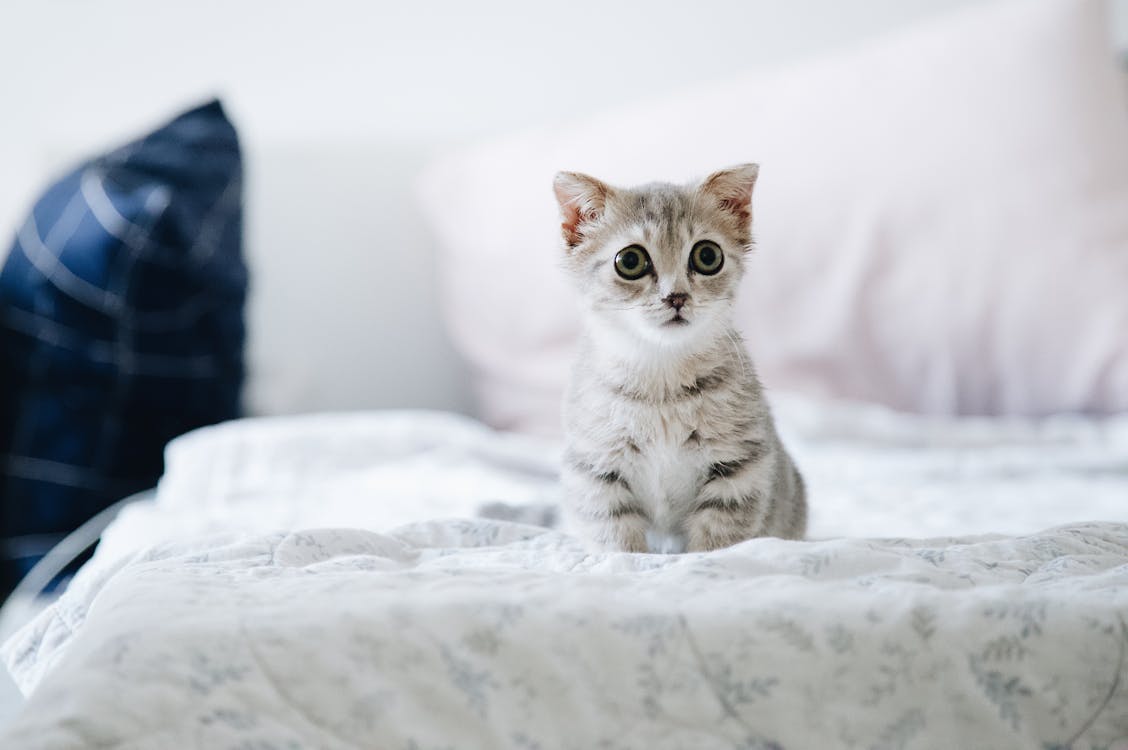
10. The Subtle Ballet of Following: A Shy Cat’s Silent Inquiry
In the understated choreography of feline behavior, the act of a shy cat following you from room to room becomes a subtle ballet—a dance of interest and a silent inquiry into your company. While not as overt as some feline gestures, this understated act of companionship speaks volumes about the evolving connection between the cat and the caregiver.
Following you around is not a random series of movements; it’s a deliberate choice made by the shy cat. In their quiet pursuit, the cat expresses a curiosity and an interest in your presence. The caregiver, as the object of this feline attention, becomes a focal point in the cat’s world—a guide and a source of security.
This subtle ballet of following is not merely a physical shadowing; it’s a nuanced language of companionship. The shy cat, by choosing to be in your proximity, communicates a desire for shared experiences and a quiet camaraderie. The caregiver, in acknowledging and reciprocating this silent inquiry, becomes an integral part of the cat’s narrative—a trusted companion who is willingly embraced in the ongoing dance of feline-human connection.
11. The Intimate Grooming Ballet: Trust in Vulnerability
In the delicate choreography of feline behaviors, the act of a shy cat grooming in front of you transforms into an intimate ballet—a vulnerable display that unveils layers of trust and a profound sense of security. When a cat engages in grooming rituals in the caregiver’s presence, it’s not merely a physical act; it’s a poignant expression that transcends shyness and deepens the feline-human connection.
Grooming, with its intricate dance of tongue and fur, is inherently vulnerable for a cat. It exposes them to a state of temporary defenselessness. When a shy cat chooses to engage in this grooming ballet in front of the caregiver, it’s a tangible declaration of trust. The caregiver, in their role as an observer, becomes a trusted audience to this intimate performance—a witness to a feline’s vulnerability displayed in the sanctuary of their presence.
In this grooming ballet, the caregiver and the shy cat become partners in a dance that goes beyond the surface of fur and cleanliness. The act of grooming becomes a shared language, a tactile expression that communicates a deepening bond and an unspoken understanding. The caregiver, in acknowledging and respecting this vulnerable act, becomes a silent participant in the feline’s grooming symphony—a harmonious collaboration that cements the foundation of trust in the shared space of care and companionship.
12. The Slumbering Trust: A Nap of Comfort and Security
In the serene landscape of feline repose, the choice of a shy cat to nap or sleep near the caregiver becomes a silent affirmation—a tranquil tableau that speaks volumes about trust and comfort. When a cat selects the proximity of the caregiver as their chosen sleeping quarters, it’s not just a matter of convenience; it’s a poignant demonstration of trust that goes beyond the waking hours of interaction.
Choosing to sleep near the caregiver is not a casual decision; it’s a deliberate act that signifies a high level of trust and comfort. In the realm of slumber, vulnerability is at its peak, and for a shy cat to willingly embrace this state in close proximity to the caregiver is a testament to the sanctuary of security that the caregiver has become in their world. How AI, ChatGPT maximizes earnings of many people in minutes
In the shared realm of sleep, the caregiver and the shy cat become inhabitants of a serene landscape—an ecosystem of trust and mutual comfort. The caregiver, as a silent guardian of the feline’s repose, becomes a symbol of safety and warmth. The act of sleeping near the caregiver is not just a physical proximity; it’s a harmonic lullaby, a melodic expression that underscores the deepening connection and the feline’s unequivocal trust in the caregiver’s protective embrace.
13. Gastronomic Trust: Appetite as a Barometer
In the culinary theater of feline behavior, a shy cat’s appetite becomes a nuanced barometer—a gastronomic trust that transcends the realm of shyness. When a cat comfortably eats around you, it’s not just a physiological act; it’s a silent testament to the foundation of trust and safety that the caregiver has meticulously cultivated.
The caregiver, in their role as a provider, becomes a custodian of the shy cat’s comfort. The act of eating is an inherently vulnerable state for a feline; it exposes them to potential threats. When a shy cat chooses to partake in this fundamental act of sustenance in the caregiver’s presence, it signifies a profound level of trust and a sense of security. Motivation – Mind – Success – Thinking – Productivity – Happiness
In the culinary ballet of trust, the caregiver and the shy cat become collaborators in the narrative of well-being. The cat, through their comfortable consumption, communicates that the caregiver is not just a food dispenser but a trusted guardian who ensures their safety. The caregiver, in acknowledging and respecting this gastronomic trust, deepens the bond and becomes a symbol of nourishment and security in the shy cat’s world.
14. A Symphony of Comfort: Positive Body Language
The silent language of feline body postures becomes a symphony—a rich composition that reflects the cat’s emotional state towards the caregiver. For a shy cat, a relaxed posture, unflattened ears, and dilated pupils are not mere physiological responses; they are the harmonious notes of a positive emotional state—a silent serenade of comfort and affection.
When a shy cat adopts a relaxed posture, it’s not just a physical stance; it’s a declaration of ease and contentment in the caregiver’s presence. The unflattened ears are not merely an anatomical feature; they are upright sentinels, signifying a lack of fear or apprehension. Dilated pupils, contrary to conventional belief, are not always a sign of stress; in the context of positive body language, they can indicate a heightened state of interest and engagement. Business – Money Making – Marketing – E-commerce
In this symphony of comfort, the caregiver becomes a conductor attuned to the nuances of feline expression. The relaxed posture, unflattened ears, and dilated pupils become the visual chords of a positive emotional connection, where the shy cat communicates their comfort and trust through the language of their body. The caregiver, in embracing and responding to these cues, becomes a partner in this silent ballet—a dance that deepens the bond and fosters a harmonious connection built on mutual understanding and positive emotional resonance.
Remember: Pro Tips
A Ballet of Consent: Honoring Your Shy Cat’s Boundaries
In the delicate dance of feline-human dynamics, the caregiver must be attuned to the nuanced choreography of consent. For a shy cat, the art lies not in forceful interaction but in the graceful acknowledgment of their boundaries. The caregiver becomes a considerate partner, recognizing the subtle cues of hesitation and respecting the unspoken language that shapes the feline’s comfort. Health books, guides, exercises, habits, Diets, and more
Forcing interaction or petting is not a gesture of affection; it’s a breach of trust. The caregiver, in this ballet of consent, refrains from imposing their will and instead becomes a patient observer, allowing the shy cat to dictate the tempo of their interactions. Letting the feline approach on their terms is not a relinquishment of connection; it’s an invitation extended with respect, fostering an environment where trust can flourish naturally.
In this ballet of boundaries, the caregiver becomes a guardian of comfort, where every gesture affirms the feline’s autonomy. By allowing the shy cat to set the pace, the caregiver cultivates an atmosphere of safety and respect—a foundation upon which a genuine and trusting relationship can organically evolve. Fitness – Meditation – Diet – Weight Loss – Healthy Living – Yoga
The Symphony of Patience: Nurturing Trust in Shy Cats
Building trust with a shy cat is not a sprint but a slow and deliberate waltz—a symphony of patience where every note is a gesture of reassurance. The caregiver dons the hat of a gentle maestro, understanding that time is the essential conductor of this intricate dance.
Patience is not passive waiting; it’s an active practice of offering gentle interactions, positive reinforcement, and a safe space. The caregiver becomes an artisan of comfort, crafting an environment where the shy cat can unfold at their own pace. The gestures of reassurance are not grand proclamations; they are the delicate notes in a melodic progression—soft strokes, soothing words, and a consistent provision of security.
Nurturing trust is a ballet that unfolds in the shy cat’s chosen arena. Positive reinforcement becomes the reward for each tentative step forward, a gentle applause for moments of brave exploration. The caregiver, in this symphony of patience, doesn’t seek to rush the crescendo but allows the shy cat to set the rhythm, ensuring that every interaction is a source of comfort and an invitation to trust. RPM 3.0 – 60% CONVERSION & Money for Affiliate Marketing
In the sanctuary of a safe space, the shy cat finds solace, and the caregiver becomes a custodian of tranquility. The journey of building trust is not marked by milestones but by the gradual emergence of a confident and assured feline companion. Through the delicate choreography of patience, the caregiver becomes a trusted partner in the shy cat’s journey toward a harmonious and trusting relationship.
The Tapestry of Uniqueness: Recognizing Individuality in Every Cat
In the vast gallery of feline personalities, the caregiver becomes an astute art connoisseur, discerning the nuanced strokes that render each cat a unique masterpiece. The acknowledgment that every cat is unique is not a mere platitude; it’s a profound recognition that their personalities, quirks, and expressions of affection form an intricate tapestry, woven with threads of individuality.
The signs and behaviors outlined are not rigid scripts; they are gentle guidelines, akin to brushstrokes that hint at the broader strokes of feline affection. The caregiver, in their role as a keen observer, understands that these cues serve as a compass, but the true navigation lies in the specificity of the cat’s language. Cat accessories on Amazon
Observing a shy cat’s specific behavior is not a passive act; it’s an immersive study that unveils the cat’s unique lexicon of affection. The caregiver becomes an attentive linguist, deciphering the subtle nuances—a flick of the tail, a soft purr, a particular gaze—that form the individual dialect of their feline companion.
In the realm of uniqueness, there is no room for assumptions. The caregiver refrains from generalizations and embraces the rich diversity within feline personalities. What works as an expression of affection for one cat may not resonate with another, and this awareness becomes the compass guiding the caregiver in the evolving dialogue of companionship.
Other Interesting Articles
- How to Stop A Cat from Spraying after Neutering: 11 Tips
- How to Tell if A Cat is in Pain from Arthritis: How to Help
- 14 Reasons Why Is My Cat Making Weird Purring Noises
- How to Take Care of A Kitten without A Mother: 21 Tips
- What Is Caterwauling? 10 Most Common Reasons Cats Do It
- How to Introduce A Cat To A New Home When Moving?
- Cat Declawing: Tips, FAQs, Health, Alternatives, Pros, Cons
- New Cat? 20 Common Warning Signs When Introducing Cats
- 23 Sure Signs Your Cat May Be in Pain and How to Help It
- How to Stop A Neutered Cat From Spraying: 15 Simple Tips
- 12 Signs Your Cat May Require a Feline Companion
- Feline Pheromones: 12 Ways Calming Cat Pheromones Work
- Do Cats Feel Lonely without Other Cats? 6 Signs of Loneliness
- 10 Reasons Why Cats Hiss: How To Stop The Behavior
- Cat Feeding: Tips, Guide, FAQs, Chart for Kittens to Veterans
- Cat Vaccinations: Schedule, FAQs, Side Effects, and Costs
- 44 Strange, Weird, and Random Cat Behaviors Explained
- 21 Pro Tips for Fostering Kittens: Essential Care Guide
- 18 Cat Sounds Your Feline Makes: What They Mean
- Sexing Kittens: How to Tell, Determine the Sex of Your Kitten
